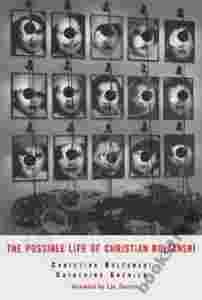|
Christian Boltanski's votive installations, archives
and objects, revolving around the fragile polarities of
memory and amnesia, identity and anonymity, have made
him one of the world's most renowned contemporary
artists. And yet, despite the centrality of biography
and testimony to his work, Boltanski's own story is
little known and has never been fully told. Published on
the occasion of the artist's sixty-fifth birthday, ''The
Possible Life of Christian Boltanski,'' written in the
form of a book-length interview (which the artist likens
to a ''psychoanalysis'' or ''confession'') with the art
historian Catherine Grenier, is Boltanski's oral
autobiography. In it, he recounts his unusual wartime
childhood (''my mother hid my father under the
floorboards. He stayed there for a year and a half,
between two floors in the house. He'd come out from time
to time--I'm living proof of that!''), his career,
friendships and marriage, successes and regrets, his
approaches to art and teaching, how he created various
installations, his relations with dealers and the
public, and other matters that illuminate as never
before his complex, enigmatic works. Boltanski is
refreshingly phlegmatic about the realities of the world
(art and otherwise), and he relates his remarkable
stories--some enormously amusing, others tragic--with a
matter-of-factness and self-deprecating humor that
highlight his capacity for humane responsiveness. As
both the self-portrait of a major contemporary artist
and a frank, fascinating memoir, this is a document of
capital importance. |
|

